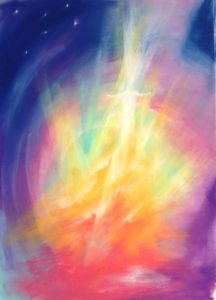 I bless the Earth on which you live
I bless the Earth on which you live
and on which you are trained,
on which you learn every day
that you are One,
that you were One since the beginning of time
and that as One you will be
in your ultimate manifestation,
identified with all things.
– Trumpet Call1
A Perfect Unity
Cannot Exist, but from the Universal
Brotherhood of Eden
The Universal Man. To Whom be
Glory Evermore Amen
– William Blake, Four Zoas, Night I
You see, it’s the others, said he
and they can’t be without thee
and thou, without them cannot be
you see, it’s the others, said he
and to see them, is of the utmost necessity
if you wish your face to be unfading
and remain unchanged in eternity.
– Odysseus Elytis, To Axion Esti-It is Worthy
If you dive inside your mind
it’s not you who you will find
it’s all the others,
the granddaughters, the grandmothers
for time is one
and what is, can’t be undone
– Dionysis Savvopoulos, Mikros Monomachos
I am He whom I love,
and He whom I love is I:
We are two spirits
dwelling in one body.
If thou seest me,
thou seest Him,
And if thou seest Him,
thou seest us both.
– al Hallaj2
- Dionysis Dorizas, The Trumpet Call, Konidaris, Athens, 1988
- Anastasios Giannoulatos of Tirana, Islam: A General Survey, p. 262. A bit further down, on page 264, Anastasios writes (translation ours): Al Hallaj (859-922), distinguished for his ecstatic experiences of methexis with the Divine, underlined warmly the idea of the theosis. He repeatedly talk of the human being as the incarnated God. A dear thought of his was the certainty that God is love and that he created the human being in his image. Consequently, the human being oughts to discover the divine image inside of it and reach union with God. Hallaj saw the exquisite example of the glorified human being in the face of Jesus rather than in Muhammad. He often uses the term hulul (=I inhabit, I reside), which in Arabiv literature is mostly connected to the Christian concept of the incarnation of God’s Logos. (…) Some of his ideas scandalized unbearably Muslims, mostly the phrase anna’ l haqq, i.e. “I am the truth”, and he was finally condemned to crufixion in the year 922 AD”.
